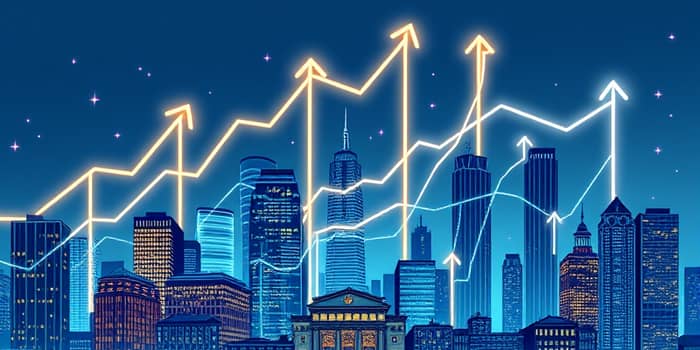
After a challenging period marked by sharp lending restrictions, banks are regaining confidence and reopening channels of credit. A combination of renewed engagement in lending activity and improving economic signals is fueling this turnaround.
In the final months of 2024, banks across the United States significantly tightened lending standards for both households and businesses. This occurred even as the Federal Reserve cut its benchmark rates by 100 basis points, creating a puzzling divergence between monetary policy and bank behavior.
Commercial and industrial (C&I) loans experienced the most pronounced restrictions. Banks cited several core drivers behind their caution:
Consumer credit also tightened further, despite already being restrictive. Credit card lending limits were cut, mortgage rates surged, and overall demand for household credit slumped. In contrast, standards for auto loans, personal loans, and home equity lines of credit held steady.
Early 2025 brought encouraging signs that the credit freeze is thawing. Non-real-estate consumer and auto loan demand began to rebound, partly driven by post-natural-disaster rebuilding efforts, such as hurricane-impacted regions accelerating insurance payouts and reconstruction.
Major banks reported improved asset performance, with commercial real estate charge-offs notably declining. For example, Wells Fargo saw office loan charge-offs fall to 16 basis points of average loans in Q1, down sharply from the prior quarter.
Overall, asset quality is projected to remain stable in 2025, with only incremental provision increases expected in pressured segments. The industry outlook highlights:
Return on common equity for the U.S. banking sector is forecast at 10%-11% in 2025, with significant shocks unlikely if the economy achieves a soft landing.
The Fed’s earlier rapid tightening cycle, spanning 2021–2023, remains a key backdrop. Although rate cuts have resumed, lending standards have lagged due to banks’ cautious stance. This mismatch between policy easing and credit availability helps explain subdued loan demand despite lower benchmark rates.
Regulatory developments also play a critical role. Ongoing debates around deregulation and a potential pro-growth agenda could further support lending by reducing compliance costs and capital requirements. However, any shift in fiscal policy or abrupt rate moves could offset these gains.
Meanwhile, private credit markets continue expanding. While offering alternatives to traditional bank financing, they also introduce new systemic exposures outside regulated banking, warranting close monitoring by policymakers.
Digital banking platforms have become a cornerstone of the recovery. Banks investing in advanced analytics, cloud infrastructure, and customer-facing apps have gained efficiency and resilience. These investments have:
Expense management remains critical, but technology-driven models are helping banks balance growth with cost discipline.
As credit demand recovers, most banks anticipate easing or maintaining current lending standards. Multifamily CRE, mortgage, and auto loans are likely to see gradual loosening of credit criteria over the coming quarters.
Nonetheless, several macroeconomic and market risks remain on the horizon:
The banking sector’s recovery after a period of deep credit tightening reflects a delicate balance between cautious risk management practices and renewed optimism in lending markets. Strong capital positions, stabilizing asset quality, and strategic technology investments underpin this resurgence. As macroeconomic uncertainty eases, credit conditions are poised to improve further, supporting growth for households and businesses alike.
References













